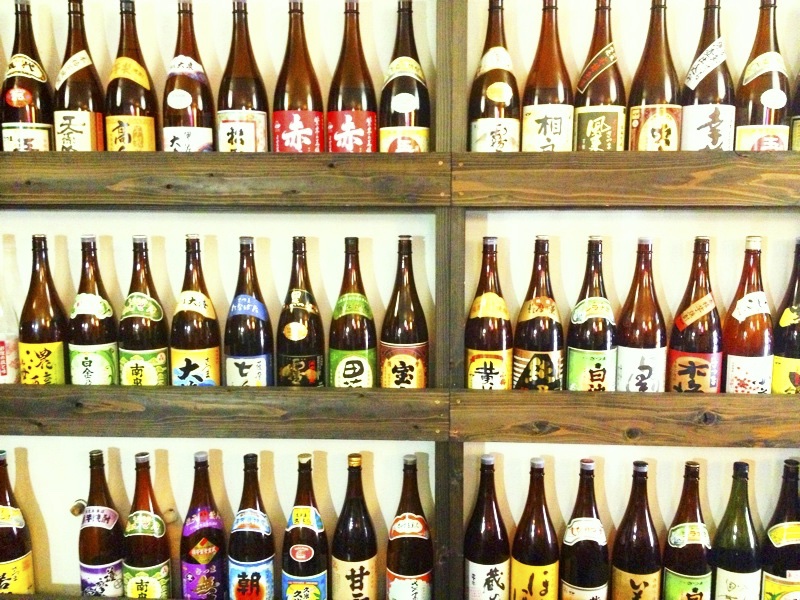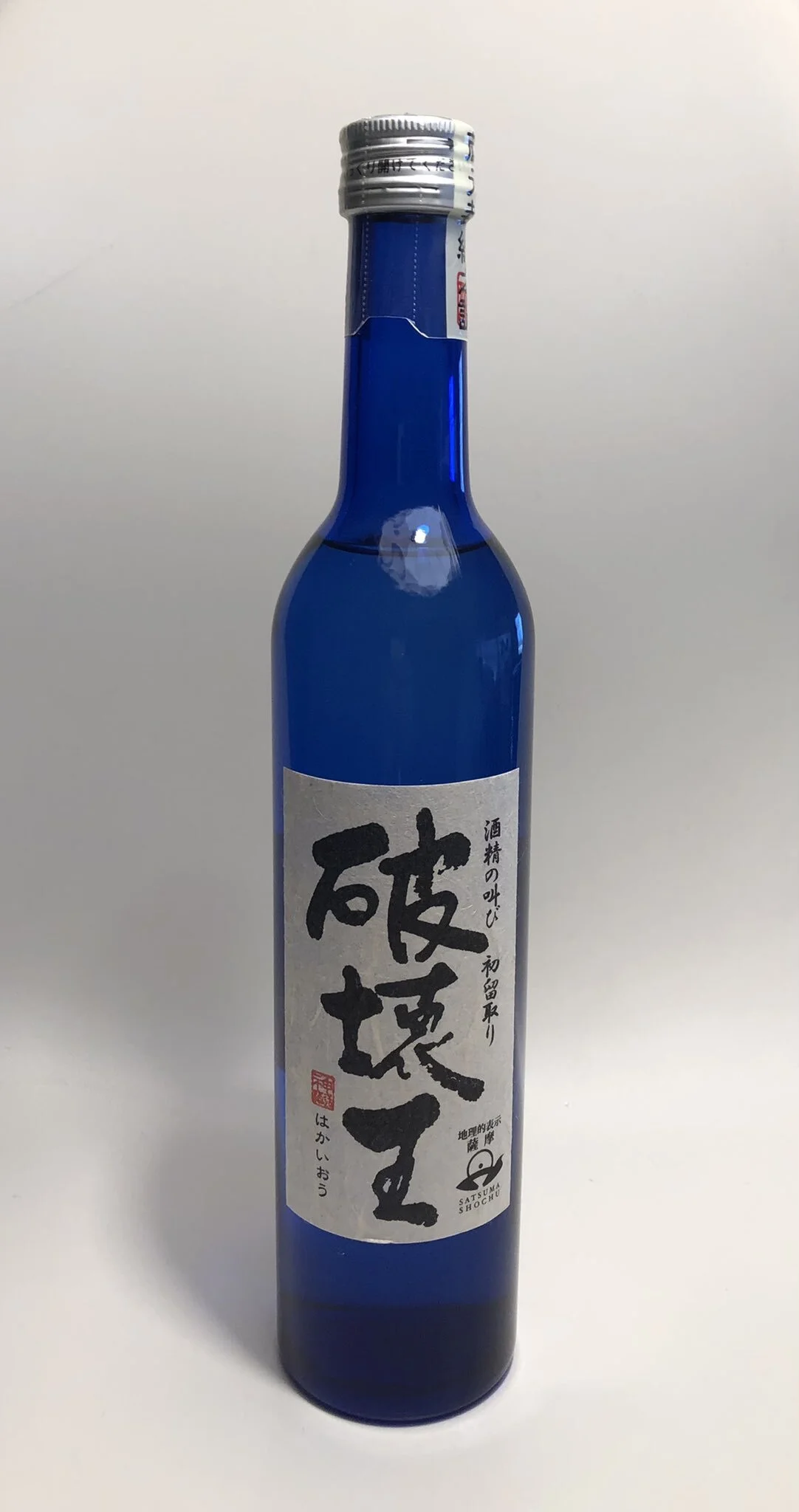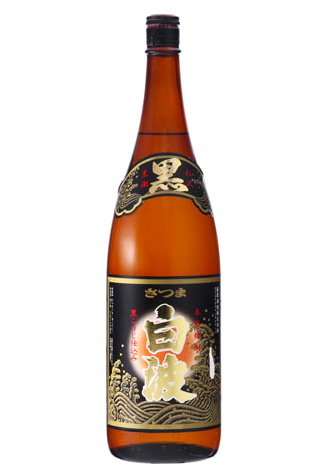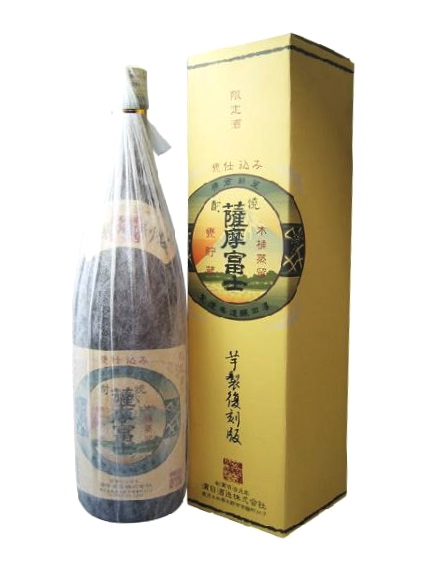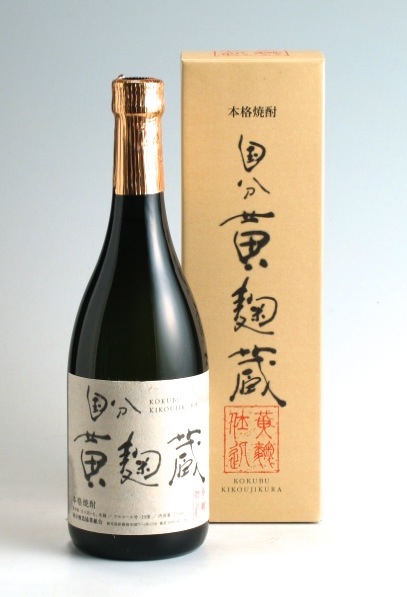The psychiatrist arrives, looking as dejected as always. It is as if he’s got the entirety of his patients’ anxieties stuffed in a rucksack strapped to his back. He takes the seat across from me and sighs.
“I’ve brought something for you,” he says and pulls an isshō-bin [1] of Nakamura (なかむら) imo shōchū [2].
It is not the first bottle of imo shōchū this kind doctor has brought me. A month earlier, he gave me two bottles of Isami (伊佐美), a hard to find and somewhat pricy [3] imo shōchū that is widely considered to be one of the “Three Greats”. [4]
In spite of hailing from the prefecture of Kagoshima where most imo shōchū is made, the psychiatrist says he doesn’t drink much. Bottles from patients and friends, all of whom assume he is a drinker like so many of his countrymen, usually end up gathering dust in his home.
“I’m happy you like imo shōchū,” he says, handing me the bottle.
“And, I’m happy you’re happy.”
When I first came to Japan a lifetime ago, it wasn’t uncommon for students to present their teachers with expensive bottles of whiskey or brandy. During the two major gift-giving seasons—o-chūgen in summer and o-seibô in winter—the pickings were particularly good and I remember returning home from work often overloaded with gifts. Thanks to the stockpile that would build up because of this largesse, I could go for weeks without having to buy beer or other alcoholic drinks. Them was the days!
Unfortunately, after nearly two decades of economic malaise punctuated by lackluster recoveries, the tradition of lavishing goodies upon teachers and other people who have been “kind to you” [5] has fallen by the wayside somewhat. I wish I could say by exactly how much sales have fallen over the years, but I can’t find any reliable data. [6]
Unlike the time he gave me the bottle of Isami, the doctor says he’d also like to try the Nakamura himself. I ask him if he’s driving—everyone has become highly aware of the problem of drunk driving in recent years [7]—and he says, no.
I fix him a glass of rock ice and pour him a drink.
“Are your wife and son out?”
“They’ve gone back to her parents’ home,” I say, as I return from the kitchen. “My wife hasn’t been feeling well lately, morning sickness and all that. It’s been much harder on her this time.”
We click our glasses together. “Kampai! Cheers!”
Although I prefer the Isami he gave me earlier, this Nakamura is not a bad consolation at all.
“Very nice,” I say.
I’ve been having some trouble filling this time slot with students. Before the doctor started, a young professor of sports psychology and good friend, attended the class on and off for a couple of years. I would help her with her reports and when the lesson finished my wife would counsel her for the next two or three hours on matters of love. A really sweet dealer in Koishiwara ceramics also belonged to the class for about six months, but was often absent. She eventually quit due to conflicts in scheduling. And for a short while, two young women, employees of the savings division of Japan Post Holdings, were coming regularly but eventually dropped out due to the difficulty of the class. So, week-in and week-out, it’s often just the two of us, the psychiatrist and me, chatting honestly about life.
Does that bother me? No. It’s the nature of the work. In all my years of running a “school”, I have only once had a full register of students and that was back in the days when Koizumi was Prime Minister. Oh, the memories!
No, the best I can hope for is to have an average enrollment of three and a half to four students per class. That means in one or two classes I’ll have six students, the maximum, three to four students in most, and a couple of classes with only one or two students, like the doctor’s class. Why not combine the less profitable classes, you might ask. Because I would still have an average of three and a half to four students. Only now, instead of 3.5 students x 15 classes (52.5 students), I would end up with 3.5 students x 12 classes (42), or about ¥80,000 ($1,000) less in income every month or almost a million yen over the course of a year.
And, there’s no telling which class will be the anemic one and which will out-perform all others. Whereas my Thursday evenings used to be very quiet, they now roar. Wednesday was once a popular day with so many students I sometimes didn’t have a place to sit myself, but has been rather quiet lately. That’s just the way it is.
I’ve found that if I focus too much on the number of students I have, I’ll invariably see those numbers start to drop off. Best, to enjoy the time, to make one student feel as welcomed as six.
“Would you like some more,” I ask the doctor.
“Just a little.”
I go into the kitchen, dump the water out of his glass, add fresh ice and pour him a second glass.
The doctor once admitted that talking all day to people who suffer from depression can be really depressing in itself.
“I can’t imagine that it would be barrels of fun,” I replied.
“Barrels?”
“It doesn’t sound like much fun.”
The doctor told me months earlier that he had originally been an orthopedic surgeon but changed to psychiatry so that he could have more time to pursue his interests of karate, the classical guitar, and English.
I asked him how many patients he saw every day.
“Fifteen.”
“Is that a lot?”
He replied that it wasn’t, adding that a typical psychiatrist might see double that number. “Most people, when they hear that I’m a doctor, assume that I earn a lot of money.”
It was tempting to ask how much he earns, but I didn’t.
“I once met a rich psychiatrist in Tokyo,” he said, “who saw fifty patients a day.”
“Fifty!”
If that psychiatrist worked a ten-hour day, I calculated in my head, then he was “seeing” each patient for about ten minutes.
I asked how a psychiatrist could possibly treat a patient’s problems.
“The man is not a psychiatrist,” the doctor replied. “He’s a drug pusher.”
“Why don’t you try seeing more patients yourself?”
“I wouldn’t be a good doctor then,” he said. “That’s the irony of being a doctor in Japan: you don’t make a lot of money because you’re good; you make a lot of money because you see a lot of patients.”
“You could say the same thing about a lot of things.”
About twenty-five years ago, I was driving with my mother when a Lionel Richie song came on the radio. “Ugh! What crap!” I said, and turned the radio off. My mother countered that Richie was a very popular singer. “And Budweiser is America’s best-selling beer,” I shot back. “Doesn’t mean it’s good. Sheesh. Even Hitler was wildly popular for a time.”
And that’s also how it also is with shōchū. The major brands, such as Kirishima and Shiranami, are okay, but if you want to enjoy something special you’ll have better luck searching among the smaller, lesser known distilleries such as Nakamura.
